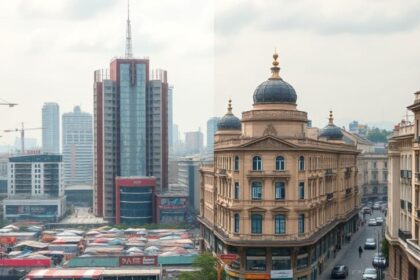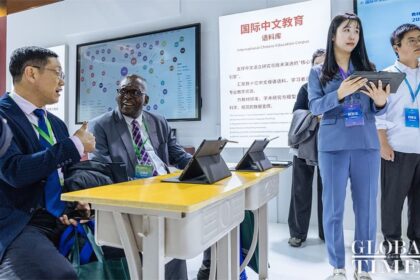A breakthrough in the story of the first ocean sailors
Fresh archaeological findings from the Philippines, Indonesia, and Timor-Leste point to a striking conclusion. People living in Island Southeast Asia were building durable boats, making ropes and nets, and fishing in deep water roughly 40,000 years ago. The evidence comes from microscopic traces on stone tools and from the remains of large pelagic fish such as tuna and sharks. Together, the clues paint a picture of skilled mariners who planned ocean crossings and sustained offshore fishing long before written history. The work challenges long held assumptions that the Paleolithic center of technological progress sat only in Africa and Europe. It places Island Southeast Asia among the earliest innovators in seafaring and maritime technology.
- A breakthrough in the story of the first ocean sailors
- What the tools show
- Evidence from the sea
- How could people cross the deep waters of Island Southeast Asia
- Rethinking Paleolithic innovation
- From fieldwork to experiments
- Navigation and knowledge
- What this means for human migration
- Caveats and next steps
- Highlights
These islands were never connected to mainland Asia. Even during periods of lower sea level, channels between Borneo, Sulawesi, and the islands east of Java remained, a region known as Wallacea. Reaching and settling these islands required intentional voyages over open water. Organic boat parts rarely survive in tropical environments, which is why direct evidence has been scarce. The new approach looks instead for the fingerprints of boatbuilding and offshore fishing in the tools and animal remains that endured. Researchers report plant fiber processing on stone cutting edges, fishing hooks and gorges, net weights, and the bones of predatory fish that do not live in shallow coastal zones. The finds suggest working knowledge of cordage, hull assembly, and seafaring that would have supported travel and trade across significant stretches of sea.
What the tools show
Archaeologists analyzed stone tools dating back as far as 40,000 years and found microscopic polish, striations, and plant residues that match stages of fiber extraction. To make strong cords, people first softened plant material, split fibers, scraped and twisted strands, then plied them into robust rope. Such cords could lash planks, bind outriggers, stitch seams, and form nets and lines. The same toolkit could support both boat construction and fishing, which fits what the sites reveal: tools tied to plant working appear alongside fishing gear and deep sea catch.
This approach, known as microwear and residue analysis, has become a powerful way to identify how ancient tools were used when organic objects have vanished. Different tasks leave different surface signatures. Scraping hard wood is not the same as slicing soft fibers, and the microscopic damage tells these activities apart. In Island Southeast Asia, the distinctive patterns of fiber processing show up on tools from multiple sites. The converging signs indicate that making cordage was not a rare or incidental task. It was a core activity that supported life at sea.
Microscopic traces and what they mean
Under high magnification, plant residues can cling to blade edges. Shiny, flattened polish can form where fibers slid repeatedly during stripping and twisting. Parallel striations can show the direction of motion. When these signatures match controlled experiments on modern plant fibers, confidence grows that ancient users were extracting and preparing strands for rope. Individual tools sometimes show sequences of wear that imply a chain of operations, from initial stripping to final finishing. This is the sort of chain one expects when producing cordage at scale rather than for a single use.
Why cordage matters at sea
Strong cordage is the backbone of any early boat. Ropes bind and stabilize hulls. They secure outriggers, attach paddles or sails, and keep cargo in place. At sea, breakage can be dangerous. Fishing lines must resist abrasion and strain from strong fish. Nets need tight knots that hold under load. The stone tool evidence points to consistent production of quality cordage, which signals planning, standardized methods, and knowledge sharing within communities.
Evidence from the sea
Archaeological sites in Mindoro in the Philippines and in Timor-Leste preserve bones of tuna, sharks, and other open water fish. These species patrol far from shore and follow seasonal routes. Catching them requires capable boats and knowledge of currents, swells, wind, and fish behavior. The sites also yield fishing hooks, gorges, and net weights. A gorge is a slender piece of bone or shell that, once swallowed, pivots and anchors in a fish’s mouth. Gorges and early hooks work with strong lines and often with baited rigs. Their presence next to deep sea fish remains is a hallmark of active offshore fishing.
Pelagic fish do not cling to reefs or shallow bays. Their bones in caves and rock shelters signal forays into deeper water. In such a setting, lines and nets must withstand heavy stress. This need circles back to the tools for fiber processing and cord making. The suite of finds fits together. Boats made from organic materials were likely lashed and stitched with plant fiber ropes, then used to fish in waters where large migratory species were available. The same knowledge would enable repeated crossings between islands, not just occasional drifts.
How could people cross the deep waters of Island Southeast Asia
Geography set the challenge. During the Pleistocene, the shelves of Sundaland (today’s mainland Southeast Asia plus Borneo, Java, and Sumatra) were often exposed. East of that shelf lay Wallacea, a chain of islands separated by deep channels. Even at low sea levels, the gaps did not close. Reaching the Philippines, Sulawesi, the Moluccas, and Timor-Leste demanded boats capable of open water. Earlier in human history, people had already reached Sahul (Australia and New Guinea), which also required sea travel. The Island Southeast Asia evidence adds a complementary dimension. It points not just to crossings but to a maritime way of life supported by specialized fishing and boatbuilding techniques.
What might those boats have looked like? Tropical hardwoods and fast-growing plants such as rattan, pandanus, and palm offer raw materials for hulls and ropes. Simple dugouts can be strengthened with side planks and outriggers for stability. Plank edges can be stitched with fiber and sealed with resins. None of this leaves much trace after tens of millennia in a humid climate. The tools, residues, and fish remains supply the indirect trail. They show that people had the skills and materials to build composite watercraft that stayed together, carried people and gear, and returned from offshore trips.
Rethinking Paleolithic innovation
The new findings challenge a long standing habit in archaeology that focuses on discoveries in Europe and parts of Africa while overlooking regions with fewer preserved artifacts. Tropical climates erase wood, fiber, and even bone more quickly. When only stone survives, entire technologies can go missing from the record. By reading function from microwear and residues, researchers are bringing those technologies back into view. The case for Island Southeast Asia is particularly strong because the evidence comes from different islands and lines up with the requirements of life at sea.
This reframing does not diminish achievements elsewhere. It broadens the map of early innovation. If people in Island Southeast Asia were making durable cordage, assembling boats, and running offshore fisheries 40,000 years ago, then maritime skill was not peripheral. It was central to survival and movement in one of the most challenging island landscapes on Earth. The region could be seen as a hub where knowledge about fibers, wood, and watercraft reached a high level of refinement very early.
From fieldwork to experiments
Years of work on Mindoro and nearby islands inspired researchers to test how far this technology might have gone. The First Long Distance Open Sea Watercrafts Project, launched with naval architects in the Philippines, aims to evaluate materials and designs that fit what the archaeological record suggests. Teams are examining how plant fibers perform as lashings, how stitched seams behave under swell, and how small hulls track in wind and current. Scaled models can be compared against wear patterns on ancient tools to check whether the motions and stresses match.
Experimental archaeology helps tackle a core question. Could composite boats built with stone tools, plant fiber ropes, and natural adhesives safely travel between islands separated by strong currents and open water? Tests can explore how long cords last under saltwater and sun, how to tie secure lashings without metal fasteners, and how many crew members are needed to keep a craft balanced and moving. If performance and wear align with what is seen under the microscope on ancient tools, confidence in the seafaring scenario grows.
Navigation and knowledge
Successful offshore travel rests on more than hardware. Navigators read stars, sun, wind, clouds, swell patterns, and the color of water. They watch seabirds and the direction of their flights, which can hint at land. They learn the seasons when fish run and when storms are likely. None of these skills fossilize, yet their fingerprints appear indirectly. Repeated catches of migratory fish point to awareness of seasonal windows. Settlement across widely separated islands points to knowledge of reliable routes. Boat technology and navigation skill reinforce each other. Each crossing adds knowledge that can be passed down through teaching and practice.
Archaeology in Mindoro and other sites also records a wider web of life. Shell tools appear early. Shell adzes become common by 7,000 to 9,000 years ago, with similar forms showing up across Island Southeast Asia and into Papua New Guinea. Shared tool types and burial practices suggest social ties over distance. These patterns fit a maritime world where people and ideas moved along sea lanes for thousands of years.
What this means for human migration
When sea crossings are planned, not accidental, settlement unfolds differently. People can carry toolkits, raw materials, and knowledge with intent. They can return to home islands, maintain family ties, and sustain trade. The record from Island Southeast Asia hints at such patterns. Deep sea fish bones and fishing gear signal regular offshore activity, not rare events. Fiber processing tools appear in quantities that point to ongoing production. Early graves and shared practices indicate active contact over long distances. This looks like a seafaring culture rather than a one time push.
These insights reshape how scholars view the spread of Homo sapiens into island chains. Instead of passive drift on rafts, the picture is of purposeful travel by people who built boats from organic materials, mastered cordage, and read the sea. Such capacities would have supported both movement across Wallacea and day to day life on islands ringed by rich fisheries. The ocean was a highway that connected communities and sustained them.
Caveats and next steps
Organic boats have not survived from this period, and that creates uncertainty. Microwear and residue studies need careful controls. Different tasks can leave similar marks, and contamination is a risk. Fishing gear can be repurposed or moved between sites. That is why researchers emphasize multiple lines of evidence from separate locations that tell the same story. The match between fiber processing tools, offshore fish remains, and fishing implements is persuasive, but more work will refine dates, functions, and local variation.
Future studies may probe submerged shorelines where ancient coastal camps now lie under water. Work with botanical remains could identify which plants yielded the best fibers and how people processed them. Experimental voyages in craft built with ancient methods can measure durability, safety, and range. Better dating of fish bones and tools will tighten timelines. Each step will help test how early mariners in Island Southeast Asia built, maintained, and sailed their watercraft.
Highlights
- Stone tools from sites in the Philippines, Indonesia, and Timor-Leste show microscopic traces of plant fiber processing that match rope making.
- Fishing hooks, gorges, net weights, and bones of tuna and sharks indicate active offshore fishing around 40,000 years ago.
- Island Southeast Asia was never connected to the mainland, so settlement required intentional sea travel across deep channels.
- Evidence points to composite boats built from organic materials, held together with plant based ropes, and used for repeated voyages.
- The findings challenge a Eurocentric view of Paleolithic progress and position Island Southeast Asia as an early center of maritime technology.
- Experimental work under the First Long Distance Open Sea Watercrafts Project is testing ancient materials and designs for seaworthiness.
- Shell tools and shared burial practices show a wider maritime network across Island Southeast Asia over thousands of years.
- Organic boats rarely survive, so researchers rely on tool wear, residues, and faunal remains to reconstruct ancient seafaring.












